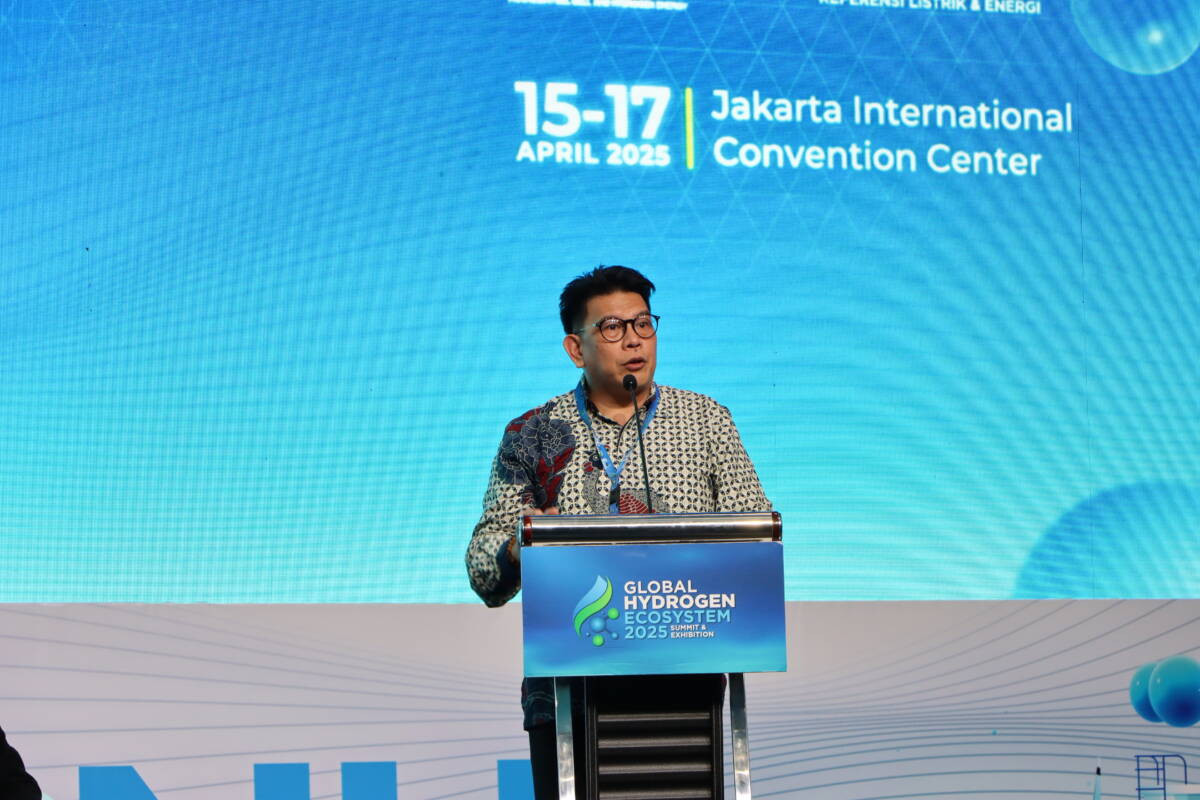Jakarta, April 17, 2025 – The use of low-emission green hydrogen is a way to mitigate the climate crisis. The government needs to build a green hydrogen ecosystem that drives cost reductions and increases demand from sectors that are difficult to electrify, such as industry, to transportation.
Irawan Asaad, Director of Climate Change Mitigation at the Ministry of Environment/Environmental Control Agency, said that as part of its international commitment, Indonesia has ratified the Paris Agreement. The energy sector plays a major role in this effort, with significant emission reduction targets, including the use of renewable energy and low-carbon technology. However, hydrogen has not been fully included in Indonesia’s Nationally Determined Contribution (NDC) strategy despite its great potential for emission reduction.
“Indonesia also focuses on energy efficiency, renewable energy development, and the use of low-carbon fuels to reduce emissions. In addition to the energy sector, the transportation and industrial sectors, including electric vehicles and green buildings, are also part of the climate change mitigation strategy. To achieve this target, collaboration between the government, private sector, and other stakeholders is very important,” Irawan emphasized at the Global Hydrogen Ecosystem 2025 event which was also sponsored by the Institute for Essential Services Reform (IESR) with support from the British Government through the Green Energy Transition Indonesia (GETI) project, on Wednesday (16/4).
Meanwhile, Fabby Tumiwa, Executive Director of the Institute for Essential Services Reform (IESR) emphasized that the reduction in the cost of green hydrogen can be achieved through two main factors, namely the reduction in the cost of renewable electricity and the reduction in the cost of electrolysis. IESR analysis shows that the cost of producing green hydrogen in Indonesia, especially from solar power, is expected to continue to decline and could reach USD 2 per kilogram by 2040. To achieve this target, Indonesia needs to address key cost factors through coordinated steps.
“The Indonesian government needs to implement policies that can reduce the cost of producing green hydrogen through policies on the supply and demand side. For example, implementing a tax credit policy like the United States, which offers incentives of up to USD 3 per kilogram to reduce production costs. In addition, contracts for price differences implemented in Japan can help producers by guaranteeing the difference between production costs and market prices,” said Fabby.
Then, on the demand side, said Fabby, policies such as the consumption mandate implemented in the European Union through the Renewable Energy Directive (RED III), which requires the use of clean hydrogen in the transportation and industrial sectors, are also important. Financial incentives for end users, such as support for hydrogen vehicles and infrastructure implemented in the United States through the Low Carbon Fuel Standard (LCFS), can also encourage the adoption of clean hydrogen.
On the other hand, Muhammad Akbar Rhamdhani, Director of the Fluid and Process Dynamics (FPD) Group, Swinburne explained that currently several methods have developed in water electrolysis technology for hydrogen production. One of them is alkaline electrolysis, which is the most mature method and is already available for large-scale production.
“Although the production cost is lower, this technology still faces challenges in terms of low current density and suboptimal efficiency. Therefore, research and development need to be continued to improve the efficiency and durability of electrolysis technology,” Akbar emphasized.

